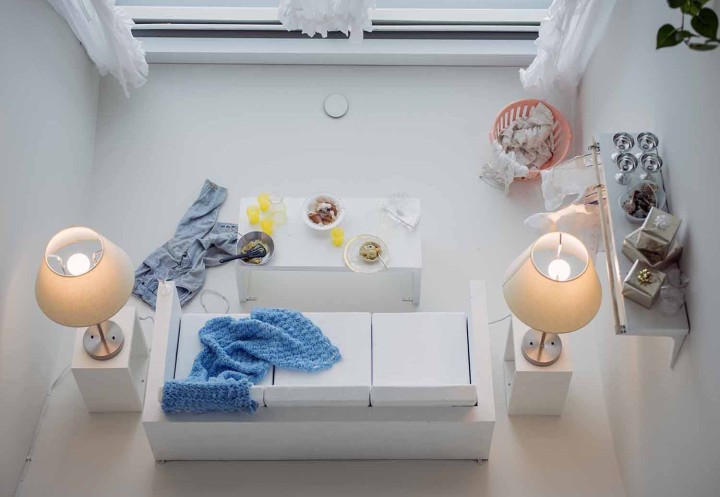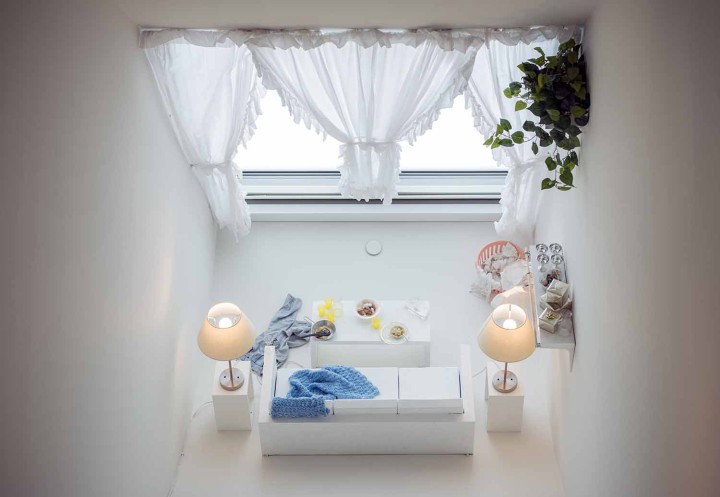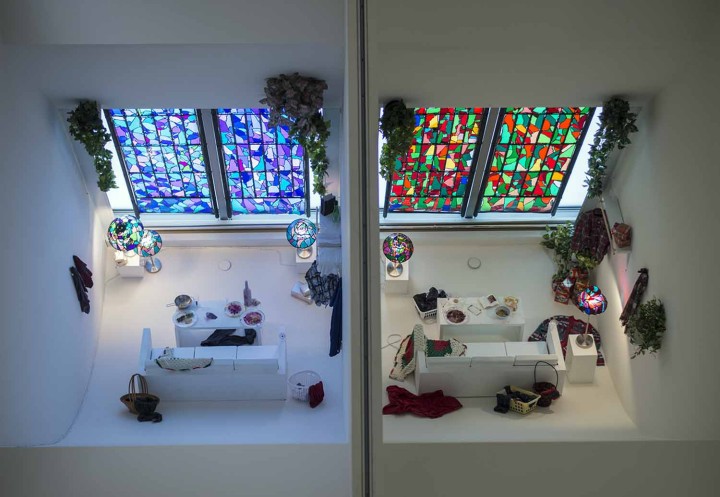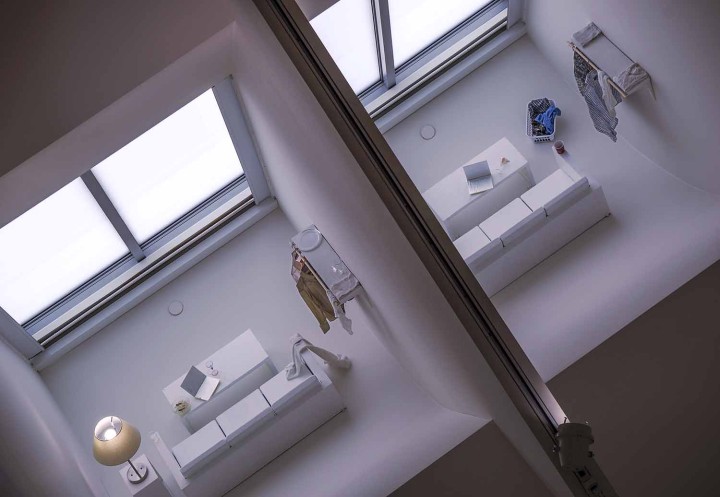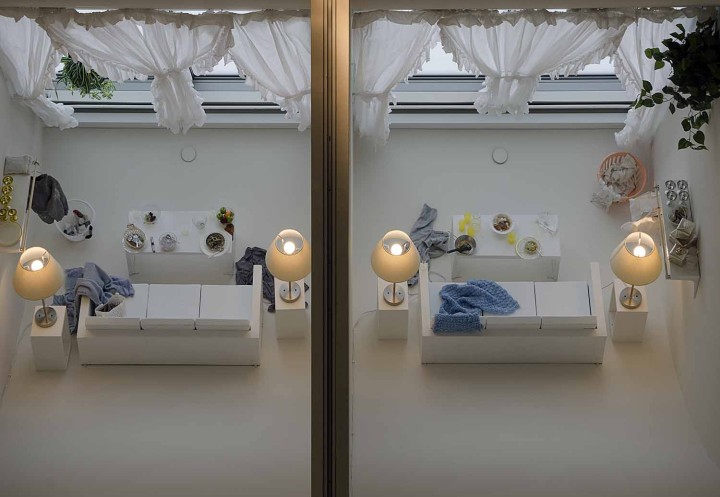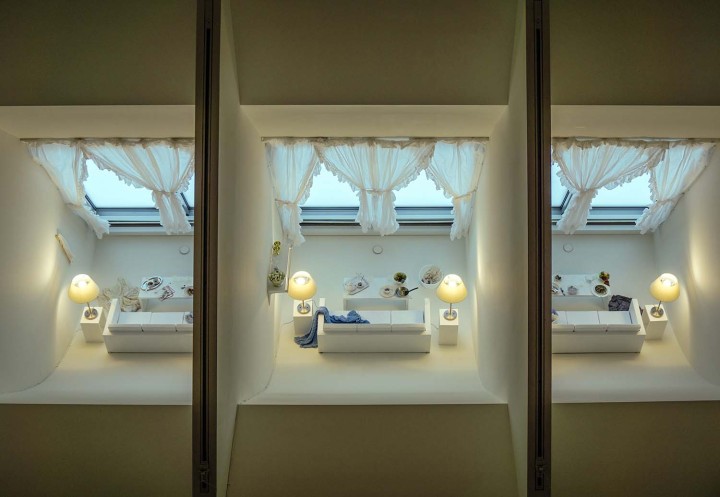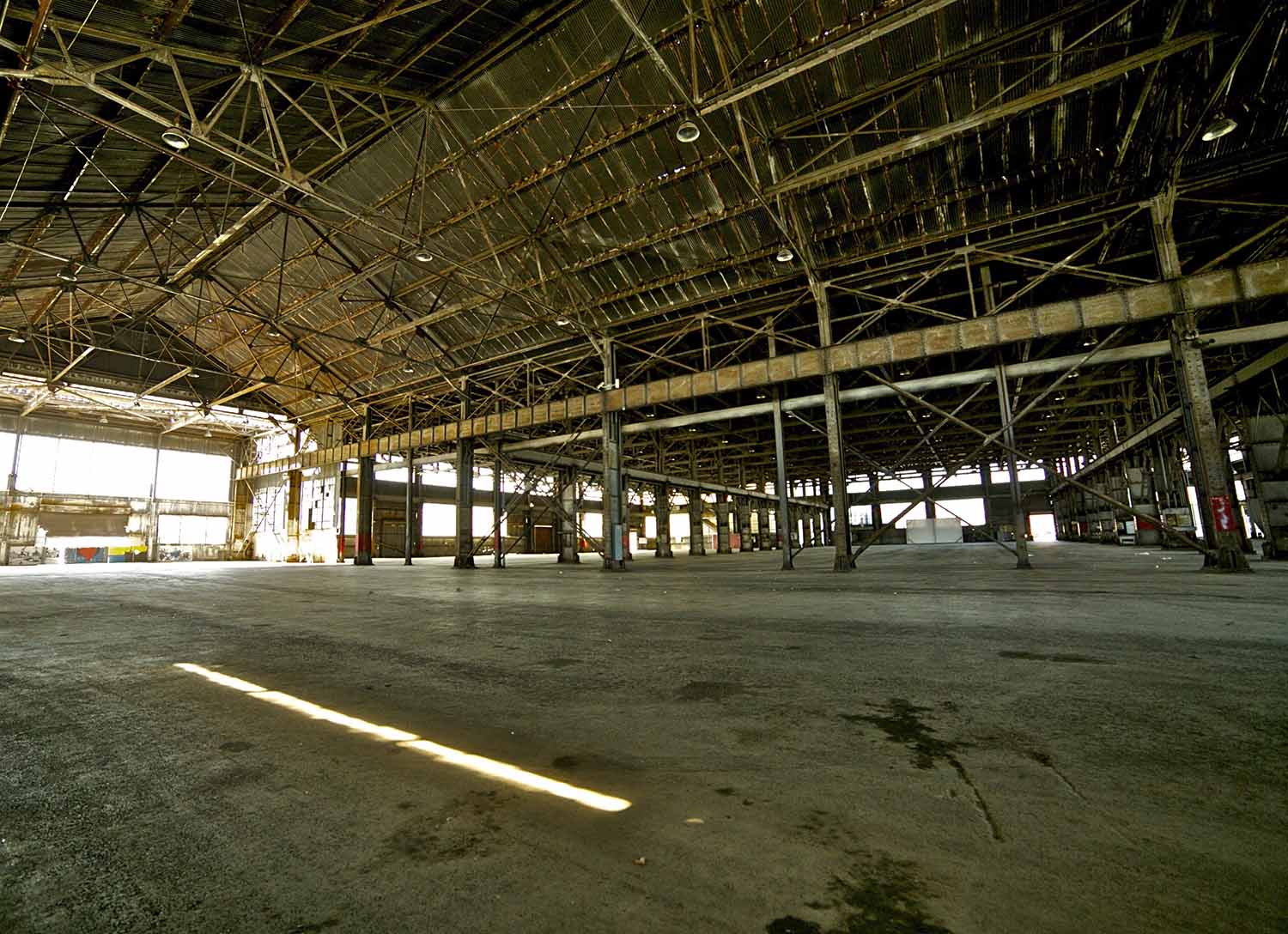In Samara Golden’s “A Trap in Soft Division,” her largest exhibition to date, the cyclical confinement of the present moment provides an autopsy of our contemporary condition.
Golden renders what she calls the “Sixth Dimension” by turning gallery architecture into a light box. Akin to filmstrips in which past, present and future collapse, each “frame” is an instance from life, different yet homogenous.
The viewer stumbles into an atrium-like space. A slick, white wooden trough takes up most of the room, forming a square-ish barricade. You sense before you hear a barely perceptible white noise being pumped into the space. It is reminiscent of a mall, its climate control giving off a whiff of sadist pleasure in safety. Circumambulating the atrium corridor, fellow viewers stares across this abyss of nothingness. Looking inward, a grid of mirrors finally nudges one’s vision upward, to look for clues out of this impasse.
Above, nested in eighteen vaulted skylight windows, in three rows of six, are upside-down living rooms, constructed out of foam and other disparate materials, in reduced proportions. The east-facing skylight forms the windows of the individual living spaces, which recall micro lofts in the nearby SoMa neighborhood, where development spurred by the tech industry has reached a fever pitch.
Each room is decorated with “life’s necessities,” each row customized to a different aesthetic. First: a starter-pack of contemporary loft living, white and minimally designed. Second: the sterility is undercut by a homey Midwestern vibe, illuminated by Tiffany-style table lamps and faux stained-glass windows made out of lighting gels. Third: an amalgamation or compromise of the former two, keeping it minimal while retaining a sense of dowdiness with “country curtains.” Strewn about are scarves, in-progress crochet, bowls of fruit, sunglasses, dustpans, tousled clothing and laundry baskets. Still, some empty wineglasses teem on the shelves amid half-opened gifts and spilled red wine, presumably after a night of tame celebration.
Life’s messiness contained and sterilized — danger kept at bay. Clarity, not vertigo, results from looking, upward and downward, ad infinitum. In Agamben’s notion of “the time of the end,” finality is never reached, as it has already arrived as part of the present. Golden prompts us to examine the false perception of the self’s boundaries; she pushes us back into the infinite now of our perpetual near-death.


